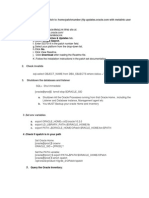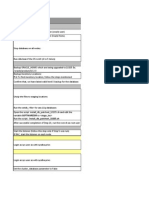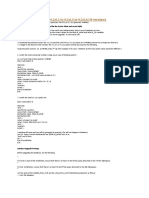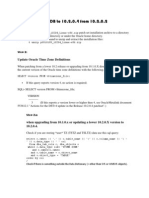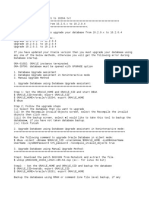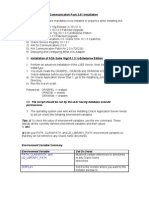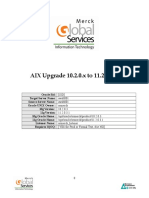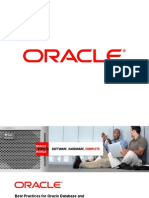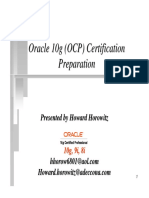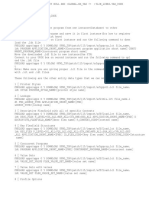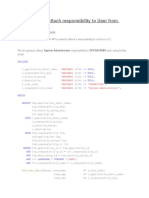0% found this document useful (0 votes)
69 views3 pagesPatching and Upgrading
This document discusses patching and upgrading Oracle databases. It describes two types of patches - standalone patches and patch sets. It provides instructions for downloading patches, unzipping patch sets, checking the oracle inventory file oraInst.loc, applying patches using opatch, and upgrading an Oracle database from one version to another. The key steps include unzipping patches, checking processes are down, applying patches with opatch, running SQL scripts during an upgrade, and verifying objects after an upgrade.
Uploaded by
Manoj ReddyCopyright
© © All Rights Reserved
We take content rights seriously. If you suspect this is your content, claim it here.
Available Formats
Download as DOCX, PDF, TXT or read online on Scribd
0% found this document useful (0 votes)
69 views3 pagesPatching and Upgrading
This document discusses patching and upgrading Oracle databases. It describes two types of patches - standalone patches and patch sets. It provides instructions for downloading patches, unzipping patch sets, checking the oracle inventory file oraInst.loc, applying patches using opatch, and upgrading an Oracle database from one version to another. The key steps include unzipping patches, checking processes are down, applying patches with opatch, running SQL scripts during an upgrade, and verifying objects after an upgrade.
Uploaded by
Manoj ReddyCopyright
© © All Rights Reserved
We take content rights seriously. If you suspect this is your content, claim it here.
Available Formats
Download as DOCX, PDF, TXT or read online on Scribd
/ 3
